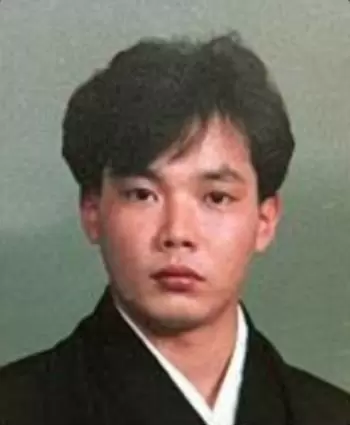
Hisashi Ouchi, a 35-year-old laboratory technician, became the victim of the highest recorded exposure to nuclear radiation in history after a tragic accident at a nuclear fuel processing plant.
His case is particularly relevant because it not only demonstrated the devastating effects of a massive dose of radiation on the human body, but also exposed serious failures in nuclear safety and worker training.
The accident occurred on September 30, 1999 in the town of Tokaimura, located 130 km northeast of Tokyo, at a factory operated by JCO (Japan Nuclear Fuel Conversion Company). The tragedy directly affected three workers and caused the evacuation of hundreds of residents from nearby areas as a preventive measure.
The Tokaimura nuclear accident is considered one of the most serious in history, classified as level 4 on the INES scale, and marked a before and after in safety protocols at nuclear facilities.
Although less severe than the disasters at Three Mile Island (USA), Chernobyl (Ukraine) and Fukushima (Japan), this incident is remembered for the terrible human consequences suffered by those directly involved, especially Ouchi.
Causes of the accident
 The accident was caused by an incorrect mixture of enriched uranium and nitric acid in a precipitation tank.
The accident was caused by an incorrect mixture of enriched uranium and nitric acid in a precipitation tank.
The workers, using unauthorized manual procedures, significantly exceeded the legal limit of uranium to prevent a chain reaction. The facility, not having a nuclear reactor, lacked adequate safety measures.
The incident occurred at 10:30 a.m. when the excessive amount of enriched uranium triggered a nuclear fission chain reaction. This resulted in the emission of neutrons and gamma rays, the most dangerous form of radiation for humans.
The three workers present observed a blue flash, an unmistakable sign of neutron emission.
Who were the affected workers?
The three workers involved were:
- Hisashi Ouchi (35 years old): He received a radiation dose of between 10,000 and 20,000 millisieverts , becoming the most seriously affected victim .
- Masato Shinohara (40 years old): He was exposed to between 6,000 and 10,000 millisieverts .
- Yutaka Yokokawa (54 years old): He was exposed to between 1,000 and 5,000 millisieverts .
To put this into perspective, the maximum safe limit for radiation exposure is 50 millisieverts .
Effects of radiation on Hisashi Ouchi
The effects of radiation on Ouchi's health were not long in coming.
 Hisashi Ouchi was rushed to Tokyo University Hospital after collapsing. Although he was initially conscious and able to communicate, the devastating effects of radiation quickly began to manifest.
Hisashi Ouchi was rushed to Tokyo University Hospital after collapsing. Although he was initially conscious and able to communicate, the devastating effects of radiation quickly began to manifest.
The radiation had destroyed much of his DNA, causing irreversible damage to his cells. Significant portions of his skin and tissue began to peel off, and he lost up to 20 liters of bodily fluids per day .
Doctors tried multiple treatments, including skin grafts, blood transfusions and stem cell transplants donated by her sister, but none were successful.
He was eventually put into an induced coma to ease his agony and died 83 days after the accident .
The solemn funeral of Hisashi Ouchi
Hisashi Ouchi was buried according to Japanese funeral traditions.
After he died after 83 days of suffering from intense radiation exposure, his body was handled with extreme care due to the risks of radioactive contamination. Specialized procedures were used to minimize any danger during the process.
Her funeral was held in a solemn atmosphere, respecting traditional Buddhist rituals, which included prayers and cremation of the body. Although her case generated worldwide attention, her family asked for privacy to process their loss in peace.
His remains rest as a reminder of the impact of the nuclear tragedy.
Biography, Ouchi's life before the accident
Hisashi Ouchi was born in 1964 in Japan. Before the accident, he was a quiet man, dedicated to his work and his family.
He studied engineering at university and, after graduating, began working at the JCO (Japan Nuclear Fuel Conversion Company) nuclear fuel processing plant in Tokaimura, a small town northeast of Tokyo.
Ouchi was a laboratory technician, tasked with tasks involving the handling and measurement of radioactive materials, such as uranium. He was known for being committed and responsible to his work, although conditions at the plant were problematic, with a lack of adequate safety protocols and poor training.
He was known among his peers for his work ethic and dedication.
Outside of his professional life, Ouchi led an ordinary life. He had a supportive family and enjoyed a quiet routine. He was not associated with any high-profile activities nor was he well-known outside his work and family circle.
What happened to the other workers and the affected area?
As for the other two affected workers, Masato Shinohara, who received a dose of up to 10,000 millisieverts, died on April 27, 2000, after months of treatment. On the other hand, Yutaka Yokokawa managed to survive after spending some time in hospital.
Despite the magnitude of the accident, the expected radiation levels were not recorded in the surrounding area. However, 119 people were exposed to low levels of radioactive contamination.
Legal and economic consequences
The accident led to a criminal trial that began in April 2001. Six senior company officials were prosecuted, including Kenzo Koshijima, the plant manager, who was sentenced to three years in prison and fined 500,000 yen ($4,500).
The then JCO president, Tomoyuki Inami, was also held responsible, along with five other executives who received suspended prison sentences. The company was fined 1 million yen ($9,000) and had its operating license revoked.
In addition, a food company and 400 affected families filed claims for compensation totaling 650 million yen ($5.8 million).